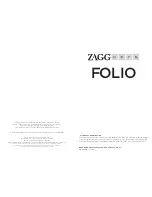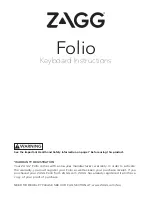
DSP Functions
Non-linear Functions
14-45
Waveform Wraparound (WRAP)
The next three graphs show the effect of various amounts of WRAP on a sine wave.
The following three graphs show the effect of WRAP on a sawtooth wave at the same
frequency.
With this function you can completely mutilate a sound, and with large amounts of wrap, turn
anything into white noise. At the input of the WRAP function, the signal is multiplied by the
combined values of the parameters on the WRAP control input page, then multiplied by an
additional gain factor of 30. If the resulting value is greater than full scale (in other words, if itÕs
sufÞciently high to clip), then instead of clipping, the waveform ÒwrapsÓ back around to
negative full scale, and it continues to evolve from that point. Likewise, if the resulting value is
less than negative full scale, it wraps to positive full scale and proceeds from there. For any
waveform, several of these wraparounds can take place before the waveform Þts into the
allowable range.
YouÕll want to try different values of the Adjust parameter to get a feel for the results of
different amounts of wraparound. Look for the value that introduces a very slight amount (it
will tend to be well below 0). The sound will start to buzz here and there, as a few segments of
the input wrap around. As you increase the Adjust value, the buzz will increase, and the pitch
of the sound will begin to disappear. Keep adding to the Adjust value, and youÕll end up with
white noise, regardless of the starting timbre.
The bright buzzy nature of wrapped sounds is due to the discontinuities in the waveforms of
the partials as they wrap around from positive full scale to negative full scale and vice versa. If
you want, you can reduce or eliminate the buzz by sending the signal through SHAPER after it
goes through WRAP (assign SHAPER as the DSP function in the following algorithm block).
Set the SHAPERÕs Adjust parameter to .25. This will map both positive full scale and negative
full scale amplitudes to a level of zero, eliminating the wraparound discontinuities, but
preserving the alterations in the waveform produced by WRAP. SHAPER will add its own
effects as well.
The control input page for WRAP uses the same set of parameters and ranges of values as DIST.
-1
-0.8
-0.6
-0.4
-0.2
0
0.2
0.4
0.6
0.8
1
0
50
100
150
200
250
300
350
400
450
500
Adjust = -30
-1
-0.8
-0.6
-0.4
-0.2
0
0.2
0.4
0.6
0.8
1
0
50
100
150
200
250
300
350
400
450
500
Adjust = -20
-1
-0.8
-0.6
-0.4
-0.2
0
0.2
0.4
0.6
0.8
1
0
50
100
150
200
250
300
350
400
450
500
Adjust = 0
-1
-0.8
-0.6
-0.4
-0.2
0
0.2
0.4
0.6
0.8
1
0
50
100
150
200
250
300
350
400
450
500
Adjust = -30
-1
-0.8
-0.6
-0.4
-0.2
0
0.2
0.4
0.6
0.8
1
0
50
100
150
200
250
300
350
400
450
500
Adjust = -20
-1
-0.8
-0.6
-0.4
-0.2
0
0.2
0.4
0.6
0.8
1
0
50
100
150
200
250
300
350
400
450
500
Adjust = 0
Содержание K2500RS
Страница 12: ...Table of Contents TOC 12...
Страница 16: ...Introduction How to use this manual 1 4...
Страница 32: ...User Interface Basics The Panel Play Feature K2vxR 3 8...
Страница 106: ...Effects Mode and the Effects Editor Configurations and Parameters 9 24...
Страница 186: ...Song Mode Recording Multi timbral Sequences via MIDI 12 52...
Страница 304: ...DSP Functions Hard Sync Functions 14 52...
Страница 394: ...Programs Setups and Keymaps K2500 ROM Keymaps 21 12...
Страница 402: ...LFOs LFO Shapes 23 4...
Страница 406: ...Note Numbers and Intonation Tables List and Description of Intonation Tables 24 4...
Страница 434: ...DSP Algorithms 26 14...
Страница 450: ...MIDI and SCSI Sample Dumps SMDI Sample Transfers 29 8...
Страница 464: ...Glossary 31 6...
Страница 490: ...K2vx Program Farm VOX K25 Appendix A 22...
Страница 494: ...K2vx Compatibility Converting programs from the K2vx to K2000 Appendix B 4...
















































